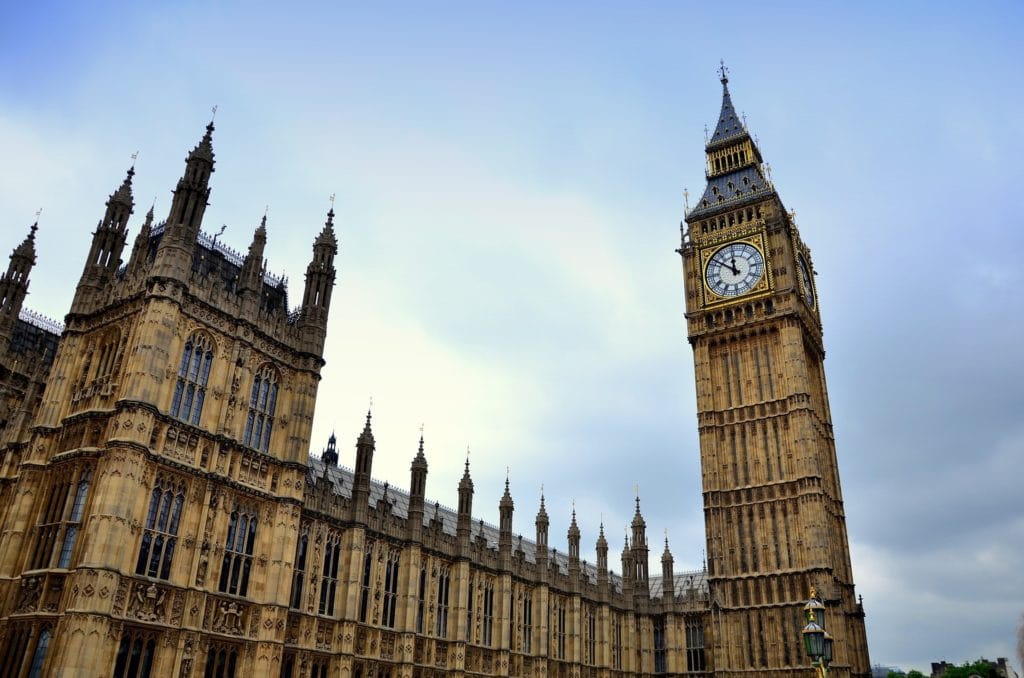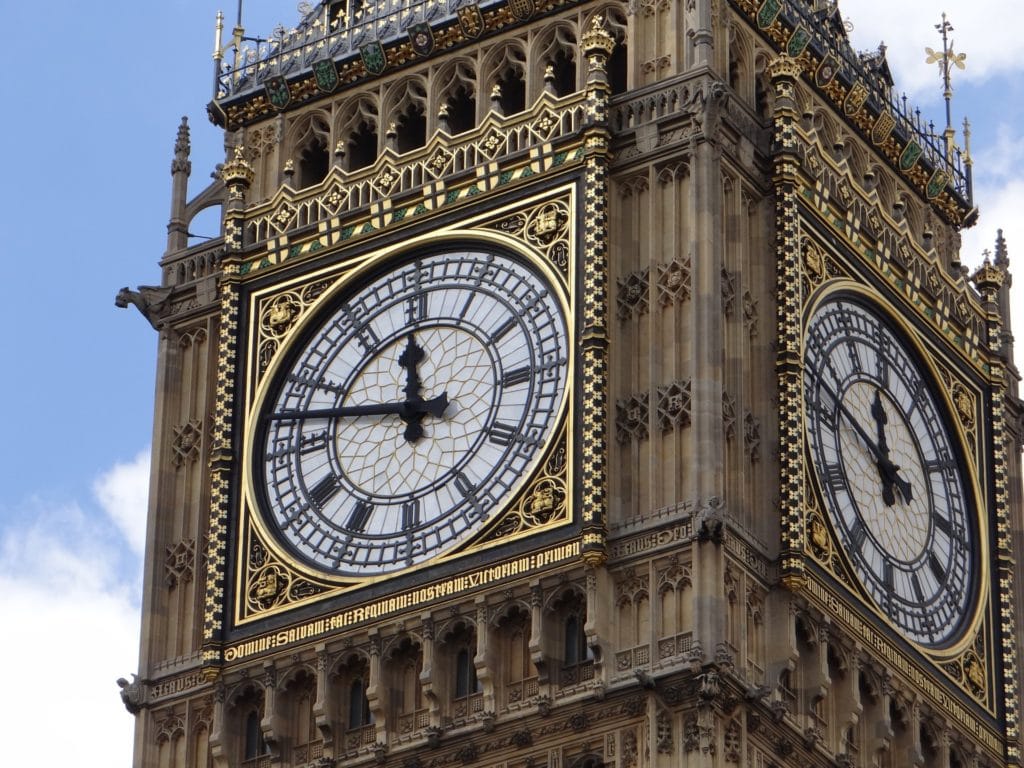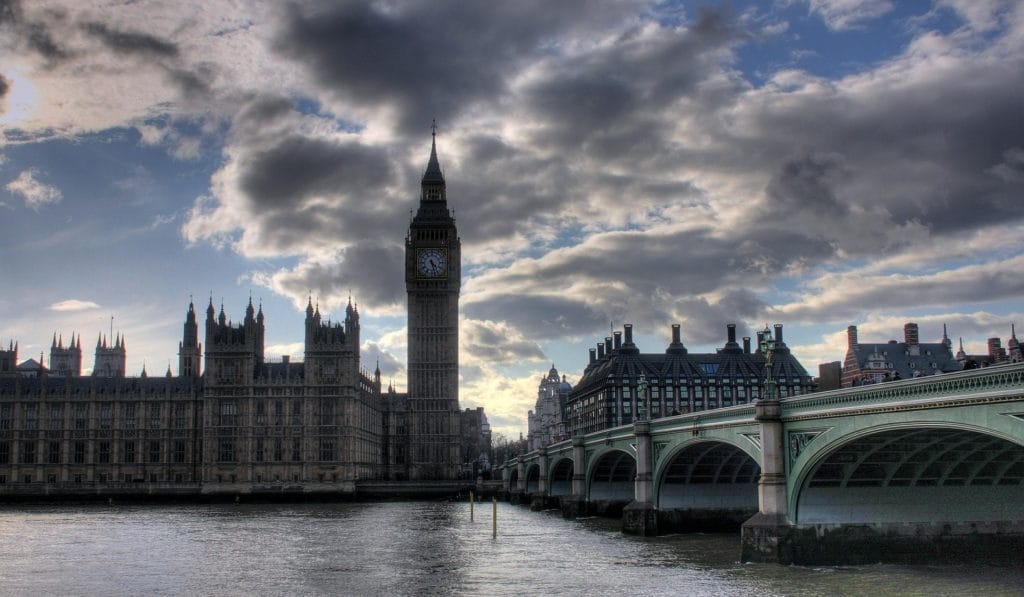Oxfordshire Mind’s Physical Activity Team are offering a weekly ‘virtual walk’ this week the team are visiting Big Ben in London!
With thanks to a reader who provided the inspiration!
Welcome, everyone. Today we are travelling not only in space but in time, which is appropriate as we are visiting one of the most famous timepieces in the world- the Big Ben Clock tower.
Normally it’s relatively easy to visit Big Ben – any UK resident can write to their MP to request a free tour– but it’s a bit of a challenge these days, because the tower’s been closed for refurbishment since August 2017, and the work isn’t due to be completed until at least 2021. So let’s jump forward in time, just a couple of years, to a day where the clock tower is open again.
It’s a typical grey, drizzly London morning as we begin our tour. You go through security in Portcullis House- the more modern building opposite the Houses of Parliament, then you’re escorted through a tunnel underneath the road to get in to the main building. It all feels very grand and important, like you’re some sort of visiting dignitary, although I’m sure that soon wears off if you have to do this sort of thing every day.

This national icon is accessed through an unassuming little door marked simply ‘clock tower’- though, as our guide Joan informs us, the tower is now officially known as ‘The Elizabeth Tower’ following the Queen’s diamond jubilee in 2012. Joan is a cheerful lady who clearly loves her job- she’s full of enthusiasm and random bits of trivia about the inner workings of 19th-century clock mechanisms . ‘As you know, the tower was completed in 1859, following designs by Augustus Pugin ’, she tells us brightly, apparently not the slightest bit out of breath, as we puff our way up the first flights of the 334 steps we will have to climb to the top of the tower. I suppose she must do these tours several times a day, so the stairs seem hardly to bother her.
It’s not a moment too soon when we come to the first stop in our tour- the “prison room” where they used to put MPs who misbehaved. Joan tells us a story about someone who was locked up in there, back in the day, for refusing to swear an oath on the Bible- although we’re too busy catching our breath to listen very closely. Then we proceed up several more flights of steps to our next stop: the clock faces. There are four of them, one for each side. As we follow Joan into the narrow space behind one of them, the light falling through their 312 panes of white glass casts a pearly glow. The black and white contrast between the glass and the wrought iron frame it sits in is very beautiful; the whole effect is like an enormous full moon trapped behind finely sculpted bars.

Then we go to see the original Victorian clock mechanism. It bristles with old fashioned cogs and wheels, like spines along the back of some prehistoric creature. You’ll notice the shiny discs of metal sitting on the pendulum. ‘Those are old copper pennies,’ Joan tells us. ‘They can be used to regulate the speed of the clock. If you add a penny, it speeds up the clock, and if you take one away, it slows it down’. We stop here a moment, listening to the slow, steady ‘tick, tick’ of the mechanism, regular as a heartbeat. Then Joan waves us onwards, on to the final part of the tour.
Finally we reach the top of the tower, coming out onto the belfry. And there, behind a wire cage, is Big Ben itself. Strictly that name applies to the 13-and-a-half-tonne bell, the one that you hear chiming at the start of the evening news. It’s completely still and motionless now, but the hour is not long away, and in a few moments we should hear that distinctive sound up close. Let’s put on the ear mufflers they’ve provided us with, and wait.
First we hear the tinkling chimes that announce every quarter of the hour. Then the first ‘bong’ of the big bell hits, making the floor beneath us shake. Why do we need a sound to announce the passing of the hours? Maybe it’s like how, in the olden days, someone used to go around every hour announcing ‘All’s well’. Perhaps we as humans need loud reassurance at regular intervals that the world is still here, we are still here, and things are going to continue as normal. When Big Ben’s chimes fell silent, it made some people nervous, thinking it was somehow symbolic, that this tradition coming to a brief halt would mean we lost something of what we were. But the fact is, things don’t have to continue as they always have for things to turn out ok.
The belfry has some gaps in it that are open to the elements, and we walk over to one of them to get a view of London. The world we are looking out on now is very different from the one that existed before the clock tower fell silent, but it’s still very much there. The familiar vista of cranes and church spires and skyscrapers is shrouded as usual in drizzly mist, the red buses are still whooshing over the nearby bridge, and beneath us the Thames continues to wend its sluggish way towards the sea.

Joan is starting to smile particularly pointedly and edge her way towards the top of the steps. I think we’ve come to the end of our tour now. It’s time for us to start making our way back down to ground level. I hope this has been an educational and interesting view of one of our most famous national monuments. See you next week for another walk!

